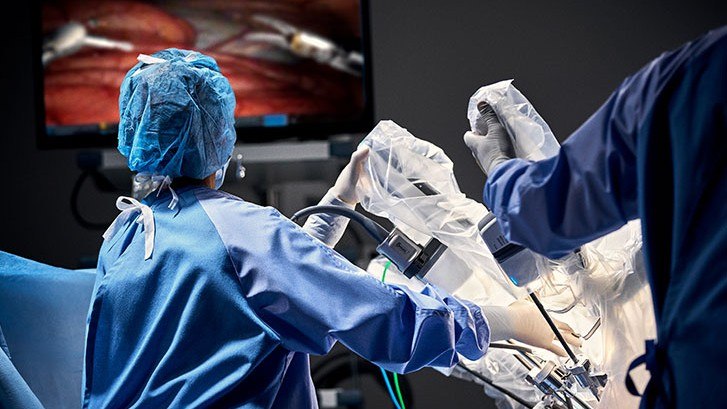Florida’s only robotic heart program. Specializing in minimally invasive robotic-assisted coronary bypass grafting, often called “robotic CABG” for short, this new program provides an alternative to open-heart surgery for certain patients. This unique procedure is only performed by highly-specialized surgeons at select institutions nationwide. Steve Xydas, MD, Chief of the Columbia University Division of Cardiac & Thoracic Surgery and Roy Williams, MD, Chief of Thoracic Surgery, have successfully joined forces to complete several of these procedures in the last few months, all with excellent outcomes.
“We have combined Dr. Williams’ unmatched robotics skills – he’s done more robotic thoracic procedures than almost any other surgeon in the country – with our long-established minimally invasive valve surgery expertise to be able to offer the unique alternative of minimally invasive robotic bypass to certain patients with coronary artery disease,” explains Dr. Xydas.
Traditionally, surgical treatment for a patient with narrowed coronary arteries involves opening the chest to reach the heart. However, Dr. Xydas and Dr. Williams have been able to instead create robotic-assisted small incisions in the side of the chest between the ribs, to reach the heart rather than cutting through the breast bone. The procedure uses advanced surgical instruments and a camera attached to the arms of a surgical robot, which is controlled by an expert surgeon via a computer console with a magnified 3-D view, enabling very precise control of the surgical instruments over a wide range of motion through small incisions.
Dr. Williams uses the robot to harvest another artery from a patient’s body that can be used to bypass the clogged artery. Dr. Xydas and Dr. Williams then connect that replacement artery to the blocked artery at a point below the blockage, which restores blood flow to the patient’s heart.
With only small incisions made, the result is less surgical trauma, reduced complications, less pain, improved cosmetic outcome, and quicker recovery. The procedure depends on several factors, including the patient’s severity of coronary artery disease, medical history, and the level of surgeon’s expertise. “Not only have our surgical outcomes been excellent thus far, patients have been very happy with how they feel during recovery, which is extremely important to us,” notes Dr. Xydas.
After a strong start to the program, Dr. Xydas and Dr. Williams expect to complete more of these procedures in 2020 in the state-of-the-art operating rooms in the new Skolnick Surgical Tower.


